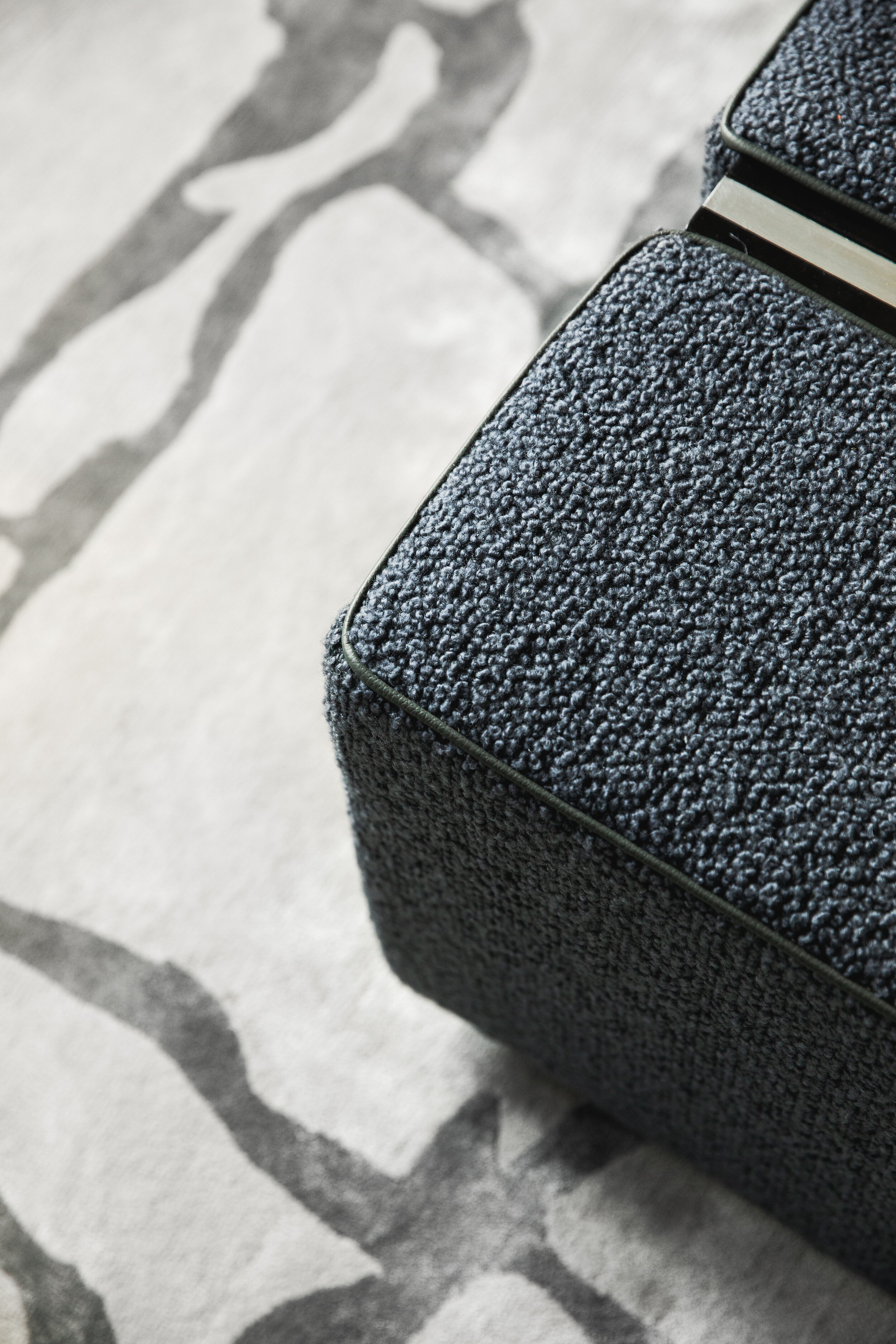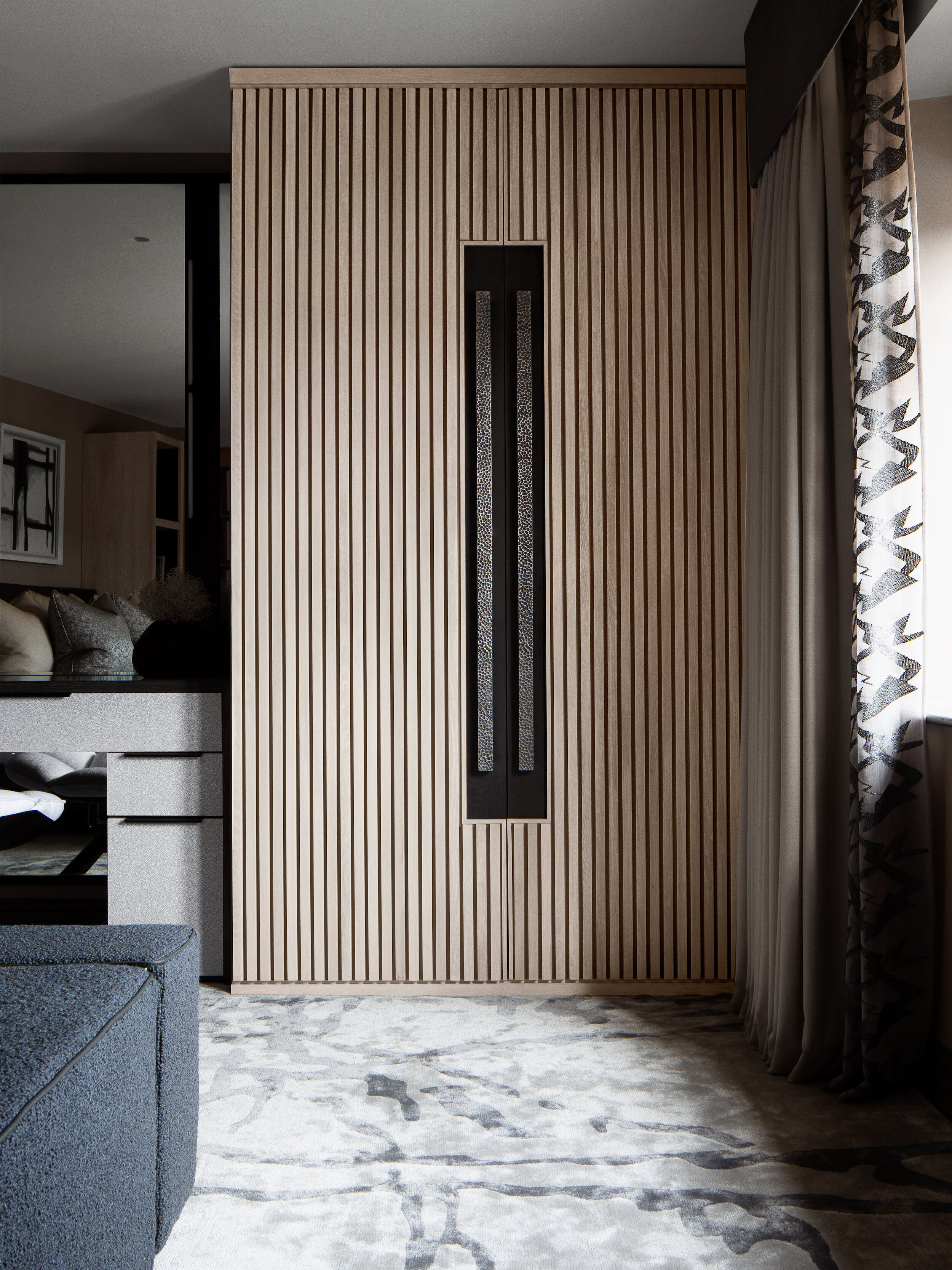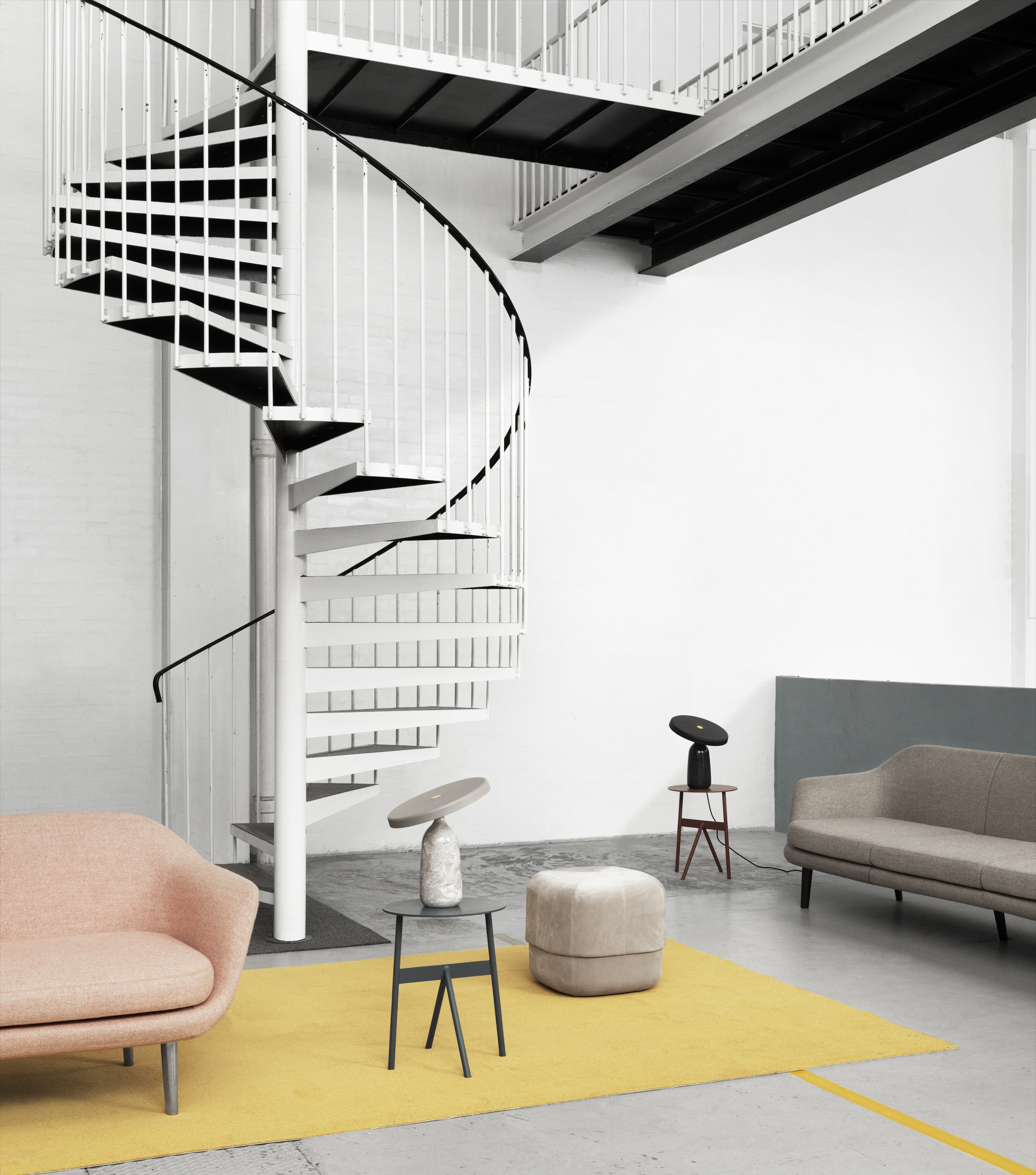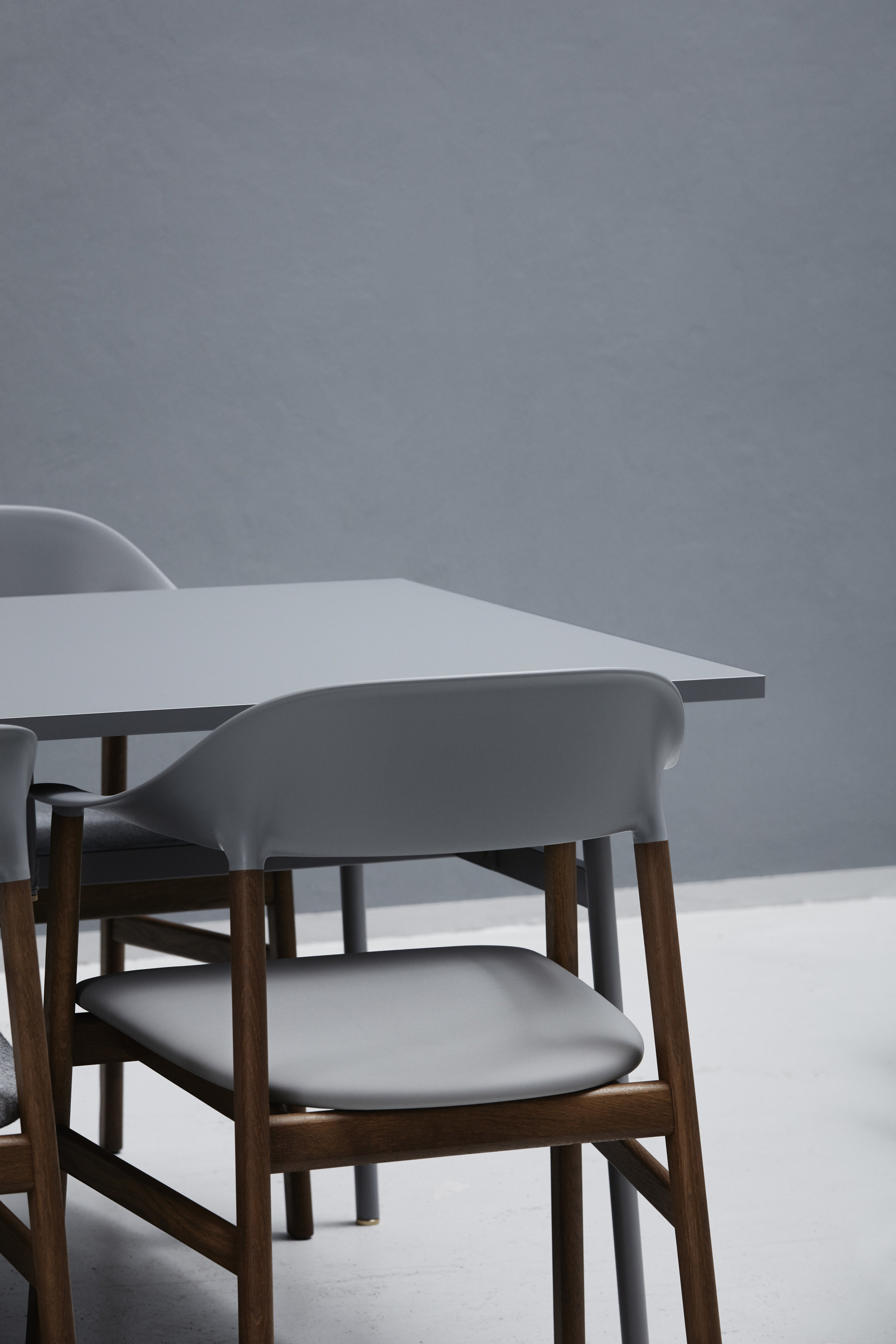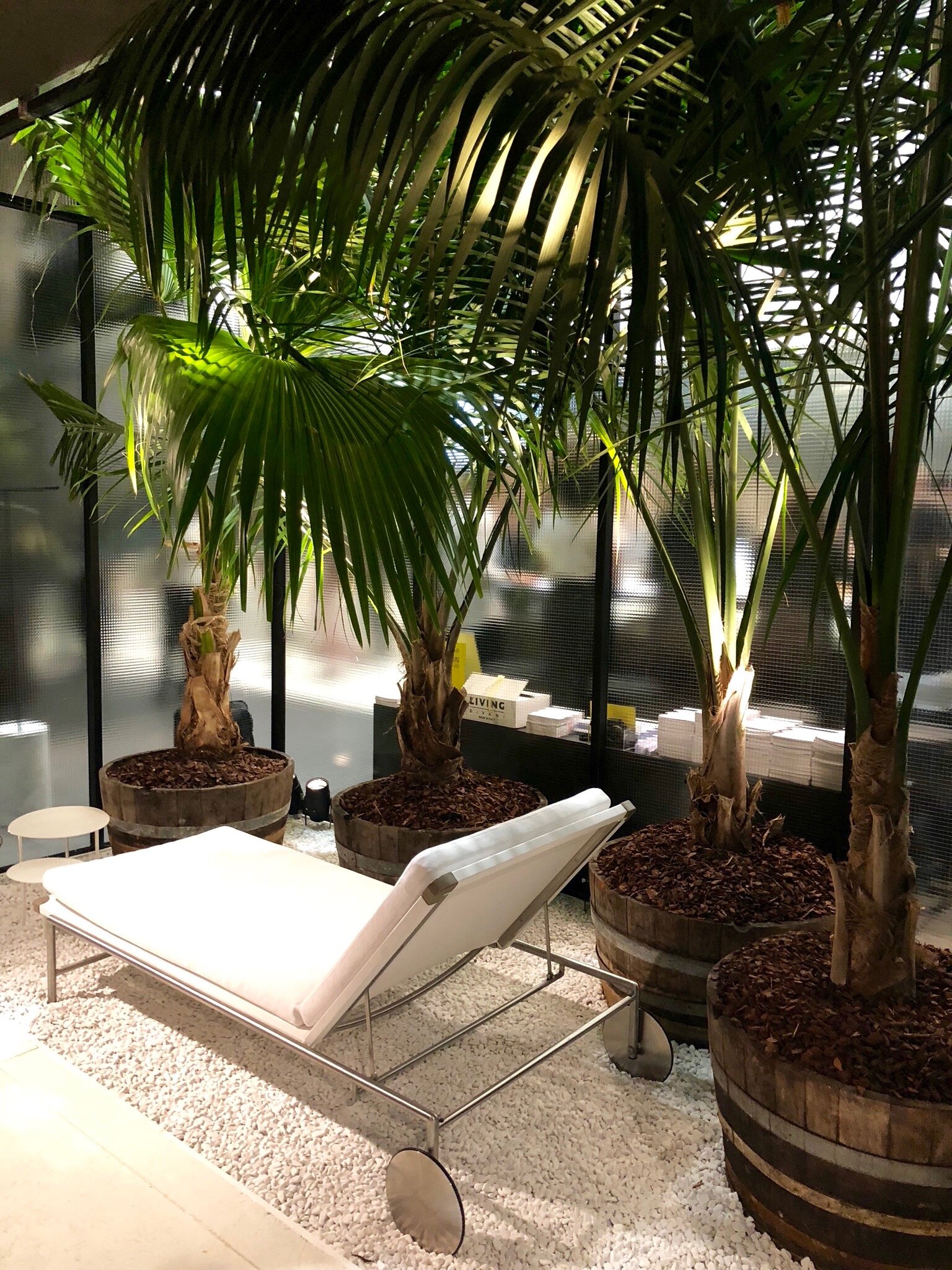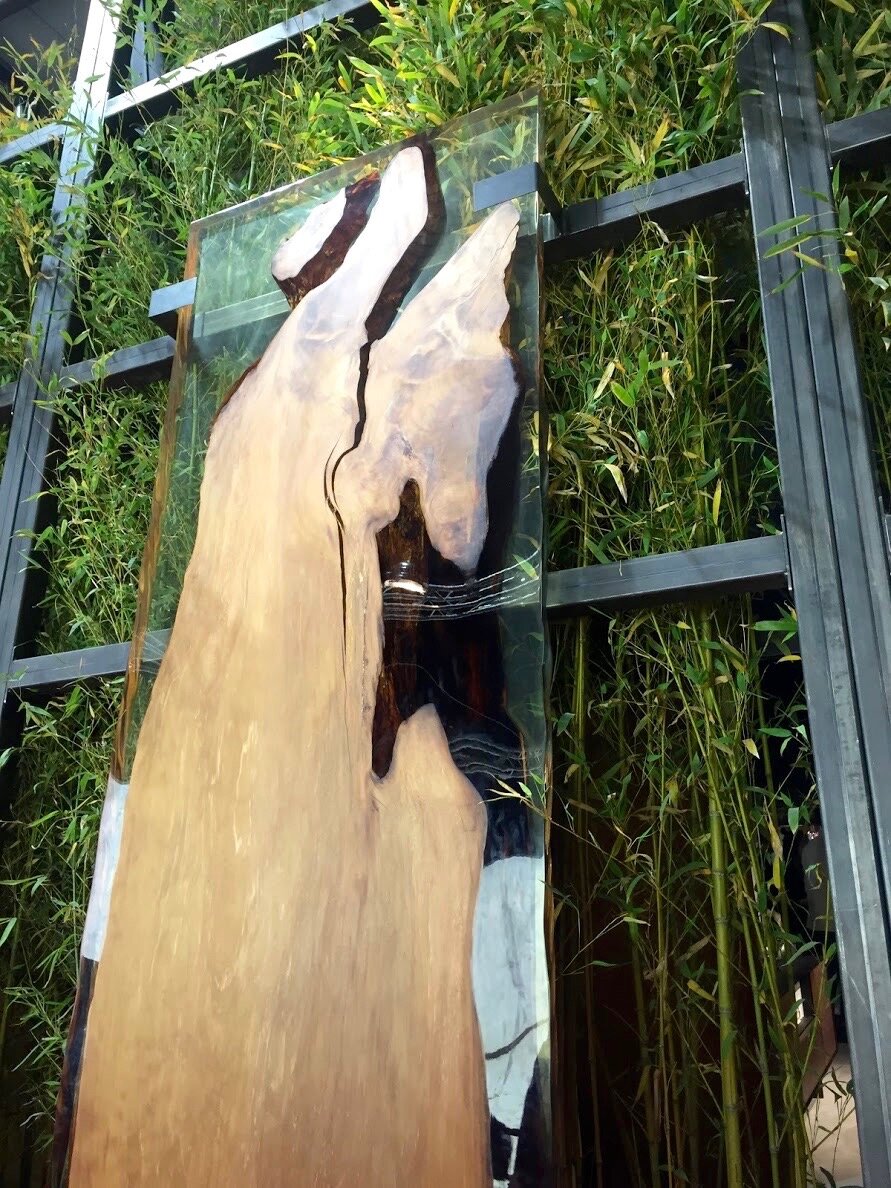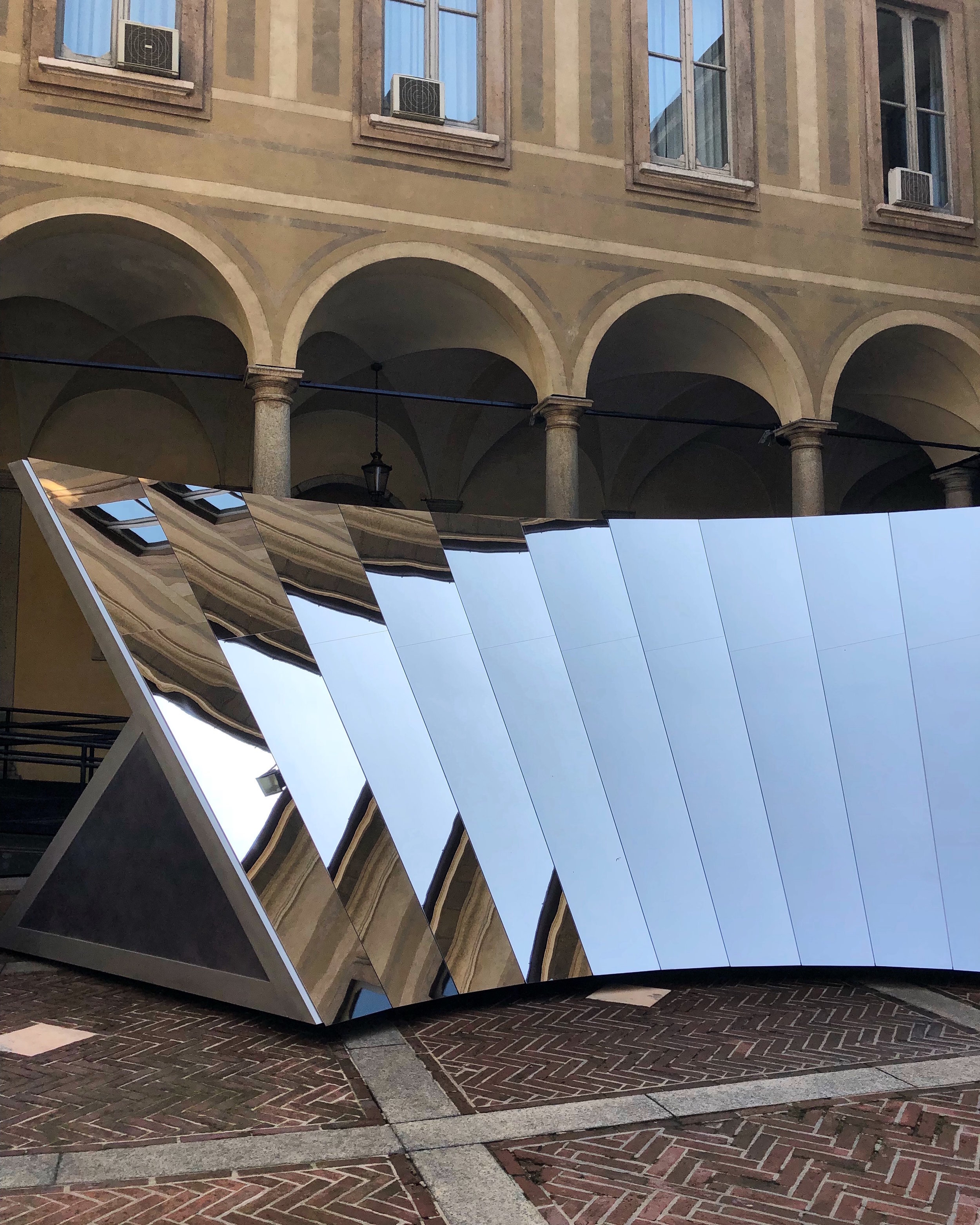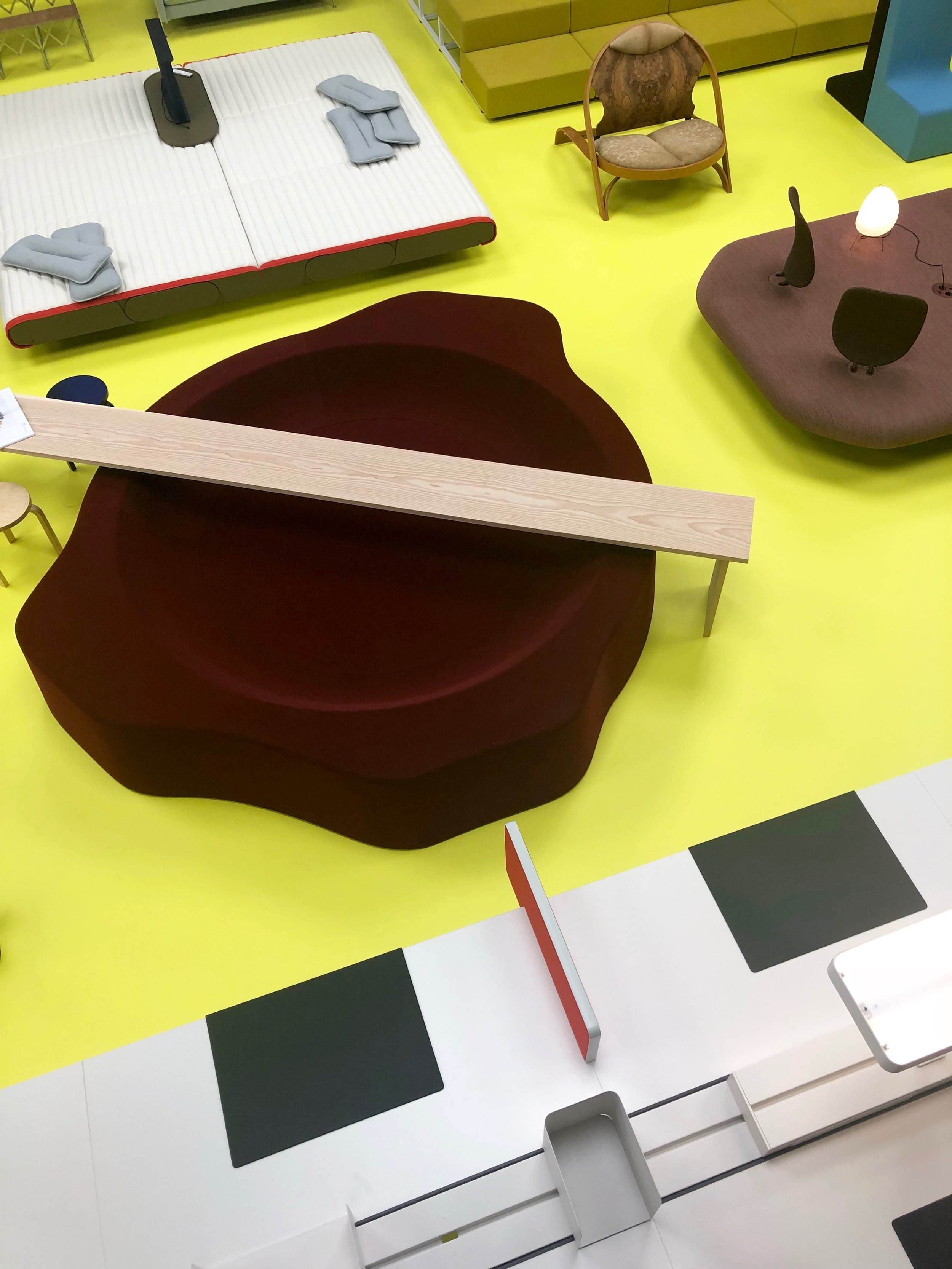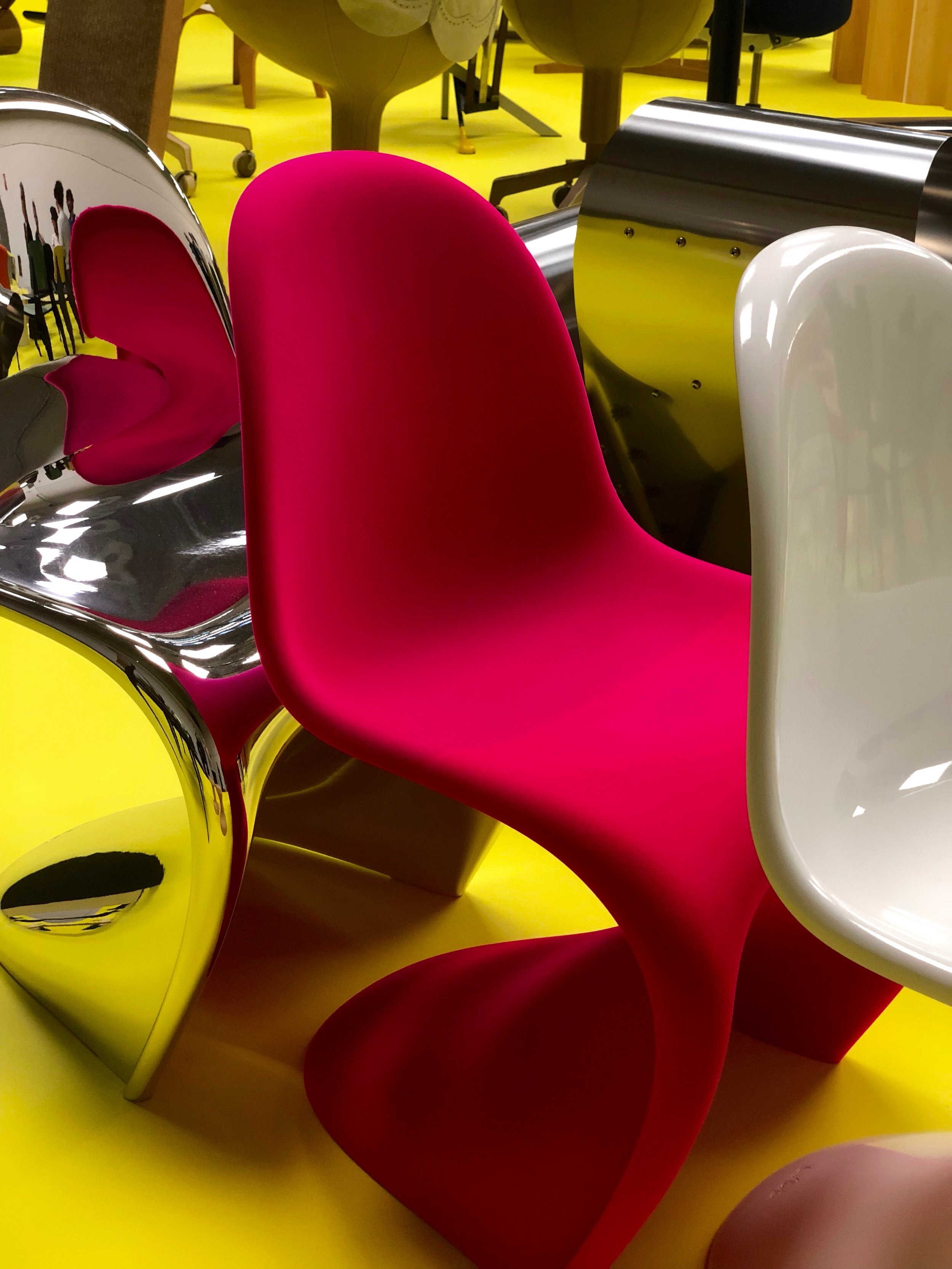The Importance of Understanding the Difference between an interior designer and a home stager.
Attempting something for the first time can be daunting and hiring an Interior Designer is no exception. Knowing if your visions will align, if they are qualified professionals, how long a project takes to complete and most importantly; what is billable - are all are common questions to ask yourself. This weeks journal entry provides inspiration for the types of questions to not only ask your designer but yourself - before hiring.
As an accredited Interior Architecture and Design practice clients are often surprised what a full Interior Design service involves.
Understanding that professional Interior Designers will look at the whole vernacular of a space, and apply a highly detailed level of technical skills into the interior architecture and spatial design, achieving a highly considered and elevated space.
Identifying what value a professional Interior Designer brings to your project, and that it is not merely their creative eye that you are commissioning, but also understanding that they bring value through their high level technical capabilities and interior architectural approach. As you embark upon your project it is important that you achieve a synergy with your chosen designer, sharing a common desire for the resulting possibilities. This will often come from considering not only the unique skills that they bring, but also their particular creative perspective.
Interior Designers are experienced qualified professionals who are looking to deliver a high level bespoke service. They will have a strong portfolio of work to demonstrate their unique design approach. Whilst many designers will be able to shift across design styles, and meet varying client briefs, it is an important consideration to select an interior designer based upon their creative zone of genius and particular speciality.
It is not uncommon for prospective clients to contact a professional Interior Designer looking for colour advice and dressing/styling services. Whilst this does form part of a larger package of professional interior designers services, as a stand-alone service this typically falls more in line with the service offering of a Home Stager or Home Stylist.
In The United States this type of professional service is widely embraced and is much more common place than it is in the UK, often being referred to as an Interior Decorator, however, in the UK this can lead to confusion as this terminology would be more commonly understood to be a painter, hence why some Interior Stylists/Home Stagers often prefer to identify themselves as Interior Designers, making it complex for a client to differentiate between the two professions when the lines are so blurred.
Professional accreditation is both an important measure of a designers professional competence and academic training, whilst simultaneously offering consumers the confidence in knowing that the professional that they are looking to hire is not just a hobbyist and will approach their project with diligent care and skill.
Rachel Usher Interior Design is a fully accredited Interior Design practice with the Society of British and International Interior Design (SBID) , a tightly regulated body which requires all members to meet a stringent criteria for accreditation and follow a strict code of ethics and conduct. This particular accreditation also allows designer to achieve International recognition of professional skills which is particularly important if working overseas. We are a multi disciplinary team and all Interior Designers within our team are full professional members of SBID.
Equally, there is the Home Staging Association UK & Ireland offering accreditation and professional credibility for Home Stagers and Home Stylists, bringing recognised integrity to an alternative group of interior professionals. Rachel Usher Interior Design is not a member of the Home Staging Association, being an Interior Design and Interior Architecture practice Home Staging is not one of our offered services.
The role of an Interior Stylist or Home Stager within the industry is not to be dismantled, indeed our studio is often approached to undertake this type of work and invariably we have to decline these opportunities finding that such work is not a good fit for our team, accepting projects that are not a good fit would also be a disservice to the client.
Home Stagers / Stylists can often execute projects more quickly and typically for a lower investment due to the reduced amount of technical planning work and site remodelling required. Home Stagers / Stylists offer a skill set and professional experience which can transform peoples homes and provide a simpler level of support and guidance to clients who are looking for a creative eye to achieve light cosmetic decorative results that they themselves could not have imagined.
Understanding the different professional services, and associated professional bodies will guide clients in ensuring that the correct professional most suited to their project deliverables, is appointed.
We’ve put together five key questions to ask any Interior Designer or Interior Architect as well as five important questions to ask yourself - for clarity and peace of mind from the very beginning of the process.
5 key questions to ask an Interior DesignER or Interior Architect
1.
How do I know that you are a PROFESSIONAL interior DESIGN service ?
There is a difference between hiring an Interior Designer or Interior Architect to that of a Home Styler/Stager - Interior Designers and Interior Architects are technically skilled, experienced and formally trained in executing bespoke, structural visions. You can learn more about what makes interior design a profession, rather than a hobby here.
All good Interior Design practices will be able to demonstrate skill, knowledge and experience through a portfolio of work. If you are presented anything that you don’t understand, technical drawings for example, ask the designer to explain these to you - this will provide you with an even better understanding of both the designers technical knowledge and experience.
2.
Do you have a predefined design style or are you able to design based on an individual clients AESTHETIC aspirations?
Some clients seek a particular Interior Designers services as way of attaining a particular predefined style - which in most cases the designer is well known for, whilst others prefer to work with a designer as a means to finding their own unique look.
A reputable designer will be able offer both, catering to the individual client their own vision through various principles. At Rachel Usher Interior Design we consider the various senses when concepting a space; light, texture, scent and colour are all considered and developed based on an individual clients needs and aspirations. This approach combines what we see as integral to the success of a design and allows the clients individual sense of self and style to be reflected through our strong design perspective.
3.
Are you able to work to my budget, which is…
It is extremely important to approach design budgets with a realistic and transparent approach. Experienced designers are able to design spaces which meet varying budget requirements and will provide honest feedback from the beginning if a budget doesn’t align with the clients aspirations.
An Interior Designer won’t be able to provide an exact figure for the project as a whole from the very beginning as it takes time to develop a design and to identify the specific associated costs. They will however be able to explain what is chargeable such as design fees, admin and project coordination as well as how they invoice and purchasing procedures. A seasoned Interior Designer will also be able to indicate investment levels required to achieve certain results.
4.
How does your interior design process work?
Every interior design studio will have their own processes and structure and will be able to explain this in advance, clearly and concisely. Interior design is a process and takes time, anyone promising short timescales for deliveries should be approached with caution - it’s likely that the work produced will not be thorough. Good designers will be working with multiple clients in tandem and producing works catered to each individual client, managed effectively with specific studio time allocated to each client.
Our own interior design service structure incorporates multiple stages following the RIBA plan of works - we offer a a carefully crafted structure which allows for client feedback between each stage.
Follow the link here to learn what may be involved within each stage, according to your individual needs.
5.
How much involvement is required from me?
The purpose of paying for an Interior Design is to outsource the time, knowledge and skills required to create a truly considered, beautiful and functional space so it’s important to make the most of the opportunity. Your Interior Designer should be happy to do everything for you whilst encouraging any feedback and thoughts at key stages during the design process - to ensure their vision aligns with the project brief. As a client it is important to make time for meetings with your designer and to eliminate any distractions so that honest and thoughtful feedback can be used to progress designs in a timely manner.
5 key questions to ask YOURSELF BEFORE MEETING WITH an Interior DesignER
1.
What do I need from my interior designer?
It is essential to have a clear idea from the beginning of what is required from your Interior Designer. Start by thinking about your ideal scenario, everything you would need to fulfil your aspirations for the space, a realistic investment level and making sure that this aligns with the projects budget.
Most Interior Designer’s will be working with more than one client at any given time and will allocate dedicated studio hours; based on what has been asked of them from the beginning. If additional works with clients arise during the design process which weren't discussed at the very beginning it’s unlikely that time will be available to start extra works immediately. Designs fees will also be calculated based on the original scope provided so make sure to communicate everything that you require at the very beginning.
2.
What is my budget for the project as whole, including design fees and installation costs?
Having a clear understanding of the costs involved in designing a space is the most important factor to consider when hiring an Interior Designer. Remember, it’s not only the products which require a budget, in most cases design fees will be charged and invoiced in stages along with the costs incurred for project coordination, craftsmen, admin and handling the procurement process.
Transparency is the best way to approach all new relationships and this open approach from the beginning will allow the Interior Designer to work towards your individual needs - and budget.
3.
When do I require all works to be completed by?
Just like the best restaurants or hotels - most Interior Designer’s require booking in advance. The design process is just that, it’s a process and time is required not only to research and develop ideas but to source individual samples or finishes and then formulate these into a clear presentation.
Once designs have been finalised nearly all high-end products require a lead time which can be anything from a few weeks to a few months. Quality items are in most cases made bespoke for you by skilled craftsman - they’re not mass-manufactured ‘off-the-shelf’ products and time is required to engineer these investment pieces which are intended to last a lifetime.
When working with builders or architects the most efficient and cost effective way to manage a project is to hire your interior designer at the same time, this will ensure clear and effective communication from the very beginning and eliminates the possibility of repeated works due to design changes.
4.
Do I have an idea of what my personal style is?
You’re hiring an interior designer because you recognise that you require professional expertise however it’s likely that you will already have an idea of what you like and also what isn’t reflective of you. Communicating this to your interior designer in your initial meeting will be beneficial to yourself and to the interior designer, setting the project off in an appropriate direction from the start.
Providing visuals is the best way to communicate any initial ideas or thoughts, many of our own clients come to us with rough ideas collected on Pinterest which is quick and simple way to demonstrate your thoughts and feelings; just one or two images will be more than enough for an Interior Designer to get an idea of what it is you are looking for . If you do feel unsure and need a place to start - think about hotels or restaurants where you loved the decor and wished you could have something similar at home.
5.
In what areas can i be flexible and what do I not want to COMPROMISE on?
Most clients don’t have a limitless budget and occasionally comprises have to be made. Core elements of a design which you feel would add value to your life should never be compromised on and identifying what these individual components are is important to avoid disappointment - as is thinking about what you could live without if your investment doesn't quite cover your ideal scenario.
Contact us
Our interior design services are crafted to offer us the opportunity to work with a diverse range of clients. No two clients are the same and our service structure is reflective of this where we mindfully balance our time between projects of various sizes, scopes and locations with varying deliverables; providing a high-end, luxury service we’re extremely proud of.
In most cases we begin new relationships with a friendly chat on the phone. We will ask you some questions around your project aspirations and it is important that you answer them as transparently as possible, this allows us to gain a better understanding of the project and it’s individual requirements. We will follow up the call with a an overview of how we work and examples of previous client projects, a FAQ’s document and an investment planner if required. Following this, if we feel that we are a good mutual fit we will offer an initial design discovery zoom call during which we can establish the full scope of work allowing us to prepare a design fee proposal for your consideration.
If you’re looking for residential interior design services, get in touch with our studio here for further information or follow this link to our Interior Design Services page.
Hiring an Interior Designer; 10 key questions to ask a designer and yourself
Attempting something for the first time can be daunting and hiring an Interior Designer is no exception. Knowing if your visions will align, if they are qualified professionals, how long a project takes to complete and most importantly; what is billable - are all are common questions to ask yourself. This weeks journal entry provides inspiration for the types of questions to not only ask your designer but yourself - before hiring.
Attempting something for the first time can be daunting and hiring an Interior Designer is no exception.
Knowing if your visions will align, if they are qualified professionals, how long a project takes to complete and most importantly; what is billable - are all are common questions to ask yourself.
Identifying what a client and Interior Designer partnership is going to look like should always be considered at the very beginning. Most Interior Design studios will allocate a certain amount of consultation time without charges before design fees commence, ourselves included and it’s an opportunity for both parties to suss out not only whether you’re a good fit for each other but also the finer details of what in most cases will be a long-term relationship.
Interior Designers are experienced professionals who have met with a variety clients and so of course will have their own pre-prepared questions, without detailed thought before an initial consultation clients can be ‘put on the spot’ with inaccurate or unrealistic expectations expressed.
We’ve put together five key questions to ask any Interior Designer or Interior Architect as well as five important questions to ask yourself - for clarity and peace of mind from the very beginning of the process.
5 key questions to ask an Interior DesignER or Interior Architect
1.
How do I know THAT you are a professional interior design SERVICE ?
There is a difference between hiring an Interior Designer or Interior Architect to that of an Interior Decorator - Interior Designers and Interior Architects are technically skilled, experienced and formally trained in executing bespoke, structural visions. You can learn more about what makes interior design a profession, rather than a hobby here.
All good Interior Design practices will be able to demonstrate skill, knowledge and experience through a portfolio of work. If you are presented anything that you don’t understand, technical drawings for example, ask the designer to explain these to you - this will provide you with an even better understanding of both the designers technical knowledge and experience.
2.
Do you have a predefined design style or are you able to design based on an individual clients AESTHETIC aspirations?
Some clients seek a particular Interior Designers services as way of attaining a particular predefined style - which in most cases the designer is well known for, whilst others prefer to work with a designer as a means to finding their own unique look.
A reputable designer will be able offer both, catering to the individual client their own vision through various principles. At Rachel Usher Interior Design we consider the various senses when concepting a space; light, texture, scent and colour are all considered and developed based on a individual clients needs and aspirations. This approach combines what we see as integral to the success of a design and represents clients individual sense of self and style.
3.
Are you able to work to my budget, which is…
It is extremely important to approach design budgets with a realistic and transparent approach. Experienced designers are able to design spaces which meet budget requirements and will provide honest feedback from the beginning if a budget doesn’t align with the clients aspirations.
An Interior Designer won’t be able to provide an exact figure for the project as a whole from the very beginning as it takes time to develop a design and to identify the specific associated costs. They will however be able to explain what is billable such as design fees, admin and project management as well as how they invoice and purchasing procedures.
4.
How does your interior design process work?
Every interior design studio will have their own processes and structure and will be able to explain this in advance, clearly and concisely. Interior design is a process and takes time, anyone promising short timescales for deliveries should be approached with caution - it’s likely that the work produced will not be thorough. Good designers will be working with multiple clients in tandem and producing works catered to each individual client, managed effectively with specific studio time allocated to each client.
Our own interior design service structure incorporates four stages; concept, scheme and detail design and installation - a carefully crafted structure which allows for client feedback between each stage.
Follow the link here to learn what may be involved within each stage, according to your individual needs.
5.
How much involvement is required from me?
The purpose of paying for an Interior Design is to outsource the time, knowledge and skills required to create an truly considered, beautiful and functional space so it’s important to make the most of the opportunity. Your Interior Designer should be happy to do everything for you whilst encouraging any feedback and thoughts at key stages during the design process - to ensure their vision aligns with the project brief. As a client it is important to make time for meetings with your designer and to eliminate any distractions so that honest and thoughtful feedback can be used to progress designs in a timely manner.
5 key questions to ask YOURSELF BEFORE MEETING WITH an Interior DesignER
1.
What do I need from my interior designer?
It is essential to have a clear idea from the beginning of what is required from your Interior Designer. Start by thinking about your ideal scenario, everything you would need to fulfil your aspirations for the space but be realistic and make sure this aligns with the projects budget.
Most Interior Designer’s will be working with more than one client at any given time and will allocate dedicated studio hours; based on what has been asked of them from the beginning. If additional works with clients arise during the design process which weren't discussed at the very beginning its unlikely that time will be available to start extra works immediately. Designs fees will also be calculated based on the original brief provided so make sure to communicate everything that you require at the very beginning.
2.
What is my budget for the project as whole, including design fees and installation costs?
Having a clear understanding of the costs involved in designing a space is the most important factor to consider when hiring an Interior Designer. Remember, it’s not only the products which require a budget, in most cases design fees will be charged and billed in stages along with the costs incurred for craftsmen, admin and handling or processing of product orders.
Transparency is the best way to approach all new relationships and this open approach from the beginning will allow the Interior Designer to work towards your individual needs - and budget.
3.
When do I require all works to be completed by?
Just like the best restaurants or hotels - most Interior Designer’s require booking in advance. The design process is just that, it’s a process and time is required not only to research and develop ideas but to source individual samples or finishes and then formulate these into a clear presentation.
Once designs have been finalised nearly all high-end products require a lead time which can be anything from a few weeks to a couple of months. Quality items are in most cases made especially for you by skilled craftsman - they’re not mass-manufactured ‘off-the-shelf’ pieces and time is required to engineer the designs which are intended to last a lifetime.
When working with builders or architects the most efficient and cost effective way to manage a project is to hire your interior designer at the same time, this will ensure clear and effective communication from the very beginning and eliminates the possibility of repeated works due to design changes.
4.
Do I have an idea of what my personal style is?
You’re hiring an interior designer because you recognise that you require professional expertise however it’s likely that you will already have an idea of what you like and also what isn’t reflective of you. Communicating this to your interior designer in your initial meeting will be beneficial to yourself and to the interior designer, setting the project off in an appropriate direction from the start.
Providing visuals is the best way to communicate any initial ideas or thoughts, many of our own clients come to us with rough ideas collected on Pinterest which is quick and simple way to demonstrate your thoughts and feelings; just one or two images will be more than enough for an Interior Designer to get an idea of what it is you are looking for . If you do feel unsure and need a place to start - think about hotels or restaurants where you loved the decor and wished you could have something similar at home.
5.
In what areas can i be flexible and what do I not want to COMPROMISE on?
Most clients don’t have a limitless budget and occasionally comprises have to be made. Core elements of a design which you feel would add value to your life should never be compromised on and identifying what these individual components are is important to avoid disappointment - as is thinking about what you could live without if your budget doesn't quite cover your ideal scenario.
Contact us
Our interior design services are crafted to offer us the opportunity to work with a diverse range of clients. No two clients are the same and our service structure is reflective of this where we mindfully balance our time between projects of various sizes, scopes and locations with varying deliverables; providing a high-end, luxury service we’re extremely proud of.
In most cases we begin new relationships via email. We kindly ask all prospective clients to answer a list of guided questions as transparently as possible which allows us to gain a better understanding of the project and it’s individual requirements. We also include an overview of how we work and examples of previous client projects. This approach allows clients the time to think about their needs - without putting them on spot
Once we have an idea of what is required from us we invite clients to our South Yorkshire studio for a one-hour initial consultation, free of charge, where we discuss projects in much more detail but most importantly we get to know our clients and they get to know us.
If you’re looking for residential interior design services, get in touch with our studio here for further information or follow this link to our Interior Design Services page.
The Simple Life; soothe your senses
In a volatile world our quest for contentment can, at times, feel out of reach. Embracing an ethos of simplicity by acknowledging our needs over our wants, can in many ways counteract this struggle to find peace, soothing the senses for everlasting satisfaction…
Simplicity, as an ethos, has particular resonance within the world of interior design.
Is less more? It’s sentiment that’s often associated with minimalism but leading a simpler life doesn’t necessarily have to involve a barely-there aesthetic. It can be soothing, not sterile, providing a calm canvas that’s curated through mindful choices which acknowledge our needs before our wants.
Not filling our homes with mindless ‘stuff’ provides invaluable benefits, allowing a space to breathe which subsequently highlights the design choices made within it. The average house has 300,000 objects inside, most of which rarely add any value in our day-to-day lives. An appreciation of object’s and their narrative value, whether that be collectables or iconic furniture design, is integral as an approach when crafting a space to leaves us filled with contentment.
Sustainable Style
Our emotive response to the elements used within a space is influenced by how we interact with them, on a functional level and so investing in key, high-quality items is undoubtedly important.
Appreciating the craftsmanship and skill needed to create iconic design and the inevitable cost involved should be viewed as an investment - a word not used lightly. Most noteworthy design brands increase prices year-on-year, allowing the everlasting designs that they produce to retain their value if resold at a later date. Carefully selecting quality elements which provide purpose as well as sustainable style not only last a lifetime but as a result also become part of our lives, our story, and we form a deeper emotional connection to a space overall as a result.
Modern Simplicity
Lighting is particularly significant when creating modern simplicity. Often appearing pared-back, accent and task lighting is in-fact applied with great attention to detail, achieved through mindful decisions with results not dissimilar to statement lighting. Cleverly coupling functional elements with hidden lighting such as mirrors, cabinetry or structural components enhances their purpose elegantly, adding immense value to them and in turn, our lives. Human interaction with directional lighting is equally important. The ability to adjust lighting according to a spaces needs again assists with the functionality of a space whilst reducing the number of individual lighting components needed.
Cohesive Colour
Curating colour that will nourish your soul can too be approached in a simple way by harnessing colours holistically according to the needs of a space. Our minds naturally associate simplicity and balance with stereotypical stark whites but in reality colour and hue selections, if considered, can provide calmness and a feeling of contentment too. Applying single use colour, known as a monochromatic scheme, can be used with great effect to simplify a space, as can picking contrast colours with the same depth or tone; this cohesion providing a sense stability.
Interior symmetry
Symmetrical balance is integral when creating a simple, serene space. Repetition or mirroring along a central axis is often seen in nature, ourselves included, making the process of how we view visuals much simpler and what we see more memorable. We’re able to focus clearly on individual elements with the amount we see kept to a minimum and these measured choices soothe our senses, leaving us with the contentment needed for true happiness...
simplicity inspiration
Browse through our Pinterest boards here.
Milan moments; Our highlights from the world’s most influential design week
Each year the eyes of the design world firmly fix on Milans prestigious Salone del Mobile, the busiest design week on the interiors calendar. This year, we headed over to Milans creative districts ourselves, in search of the latest inspiration from the exhibition itself as well pop-ups, installations and more.
Milan's Salone del Mobile is an unmissable event.
It’s the busiest design week within the interiors calendar, on an international level, showcasing and celebrating creativity, innovation and quality in equal measure. Noting just six top highlights from the world’s most influential design week was, quite frankly, difficult but you will see one common characteristic found throughout this years showcase; the revival of an objects narrative value.
1.
Wallpaper Handmade - a world of wellness
Wallpaper magazine’s iconic installation dedicated itself this year to curating a sanctuary for the self with ‘Wellness and Wonder’; a specially commissioned collection of designs by skilled makers from across the globe.
British design studio Pinch London were a particular highlight, a brand created to enhance our daily lives with a core focus on warmth, substance and most importantly the human experience. Aiming to encourage and enable users to live well through carefully crafted design, Pinch showcased the new ‘Elan Armoire’ cupboard which utilised dynamic marquetry techniques to create a truly considered design inside and out. The British brand are also able to colour match to all Paint & Paper Library colour references for those in favour a monochromatic interior scheme...
2.
Nature invading
Interior botanicals have grown and multiplied - an organic progression for the plant trend that’s become a mainstay in most homes. The use of large-scale tropical plants, grouped and clustered, could be seen almost everywhere with a clear focus towards architectural styles, something previously highlighted during our visit to Tom Dixon’s, The Coal House.
The continued relevance of nature is based on our experience with greenery itself, which is instinctive, garnering dramatic effects on our emotional wellbeing and reducing stress; whether that be at work or in a home environment. We’ve already made a conscious effort to grow our own indoor-jungle at the studio, utilising nature to curate an impactful visual with holistic benefits.
3.
Cos X Phillip K Smith III - Open Sky
The sensory reactions of light, space and colour formed the basis of this years Cos collaboration with artist Phillip K Smith III. The immersive installation mirrored the structures Italian-renaissance surroundings at the Palazzo Isimbardi but also a 360 degree view of the sky; a meditative tribute to the world around us viewed with an ever changing perspective.
As a brand Cos consistently focus on the sensorial elements of tactility, modernity and functionality and these core values were clearly presented within Open Sky, curating a considered and unique experience.
4.
Minimalist lighting
The word ‘minimalism’ denotes a visual mood board of clean lines, monochromatic palettes and brutalist architecture however the true meaning is not an aesthetic…
Do our possessions offer purpose? That’s the question on every minimalists lips, a key sentiment apparent throughout a variety of the brands presentations this year with lighting in particular utilised as a tool rather than as a statement. Hidden LED lights behind mirrors or within cabinetry were cleverly combined with directional lighting, designed with function at its very core. Where pendant-lighting statements were made the forms were large but notably simple, even within British designer Lee Broom's latest product launch - titled 'Observatory'. Presented within an equally pared-back installation, each design played with sculptural and spherical forms, with mirror-polished finishes in modular systems, allowing the lighting sculptures to be built according to a spaces needs.
5.
Vitra - Typecasting
The iconic Vitra, a brand well known for its collaborative design ethos with design greats such as Charles & Ray Eames, George Nelson, Jean Prouve and Ronan & Erwan Bouroullec hosted Typecasting; an assembly of iconic, forgotten and new Vitra classics.
The opening party, held the evening prior to Milan’s Salone Del Mobile official opening, provided an exclusive and expansive view of Vitra's past, present and future. The curator of the exhibition, designer Robert Stadler, emphasised the social role furniture plays in our daily lives, of chairs in particular, exploring why identifying oneself with particular objects is essential for cultivating and projecting an individual self-image. The collection was split into various ‘profiles’, defined by the product’s characteristics and function. The 'Communals' profile was particularly interesting, a collections of objects designed to invite people to gather, share and communicate.
6.
Textual togetherness
Change is underway in global premium-living. In a constantly evolving world our homes social capabilities have become increasingly significant. The current mood of ‘Togetherness’ was consciously considered within the textured elements showcased this year, from modular sofas to silky high-pile rugs; comfort and customisation were consistently key.
Possibly the most refreshing considerations however were made within upholstery. Dining and lounge chairs were presented without the formalities normally associated to them, embracing suedes, finishes loose and gathered, for a more inviting and comforting experience.
The German brand, Rolf Benz, like us believe that a home is not a place, it’s a feeling - which is possibly why they’re contemporary, biomorphic concepts felt so inspiring to us.





